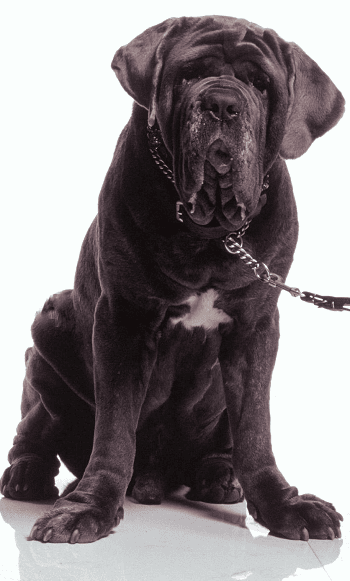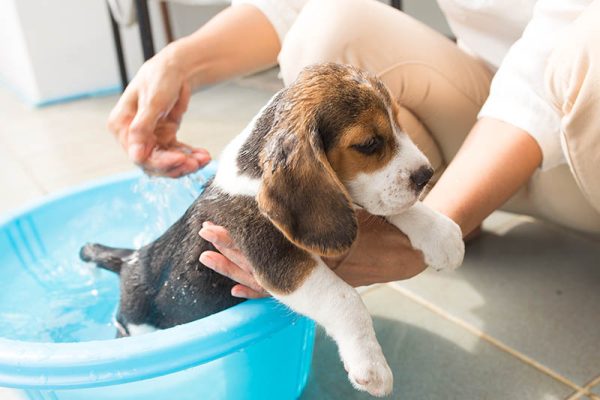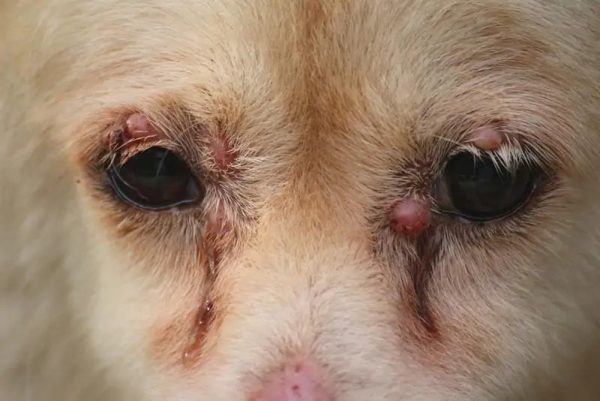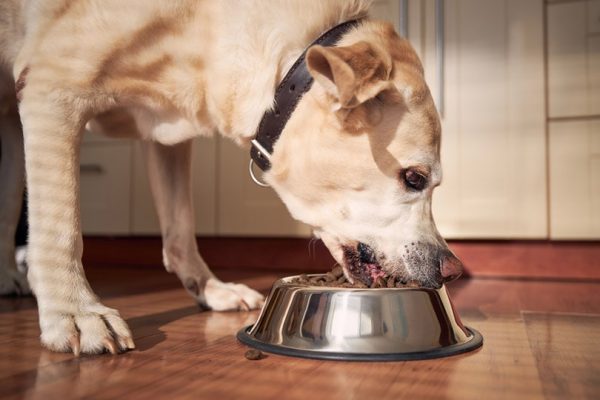In this article
View 5 More +Dogs can be prone to developing skin tags, just like people can. These benign growths may occur in areas where the skin rubs together (skin folds) or in areas of chronic irritation. Skin tags can be monitored and do not need to be surgically removed unless they are causing discomfort to your dog. Keeping a home journal of skin growths on your dog can help alert you to any changes that may need veterinary attention.

What Is a Skin Tag?
Skin tags, also known as fibrovascular papillomas, are small, abnormal growths of skin that may be attached by a stalk-like structure of tissue. They’re movable and non-painful and can be pink or dark-colored. They’re typically located on the head, face, legs, and chest and may only be a few millimeters in size. Skin tags can appear as a single bump or in clusters.

What Are the Signs of a Skin Tag?
- Small growth attached by a stalk-like structure
- Non-painful, movable growth
- Pink or dark-colored growth
- May be single or in clusters
What Are the Causes of Skin Tags in Dogs?
- Chronic irritation
- Papillomavirus
- Breed of dog
Areas of chronic irritation, such as on the neck due to the rubbing of a collar or harness, may cause the growth of skin tags over time. They’re also common over the knees, elbows, and chest, as these are often pressure areas. Allergies can lead to scratching and biting, which may result in the formation of a skin tag over time.
Certain breeds of dogs are prone to developing skin tags, including Boxers, Bulldogs, and Pugs, though all breeds can develop them.
If your dog shows any of these signs, we recommend speaking with a vet.
How Do I Care for a Dog With Skin Tags?
Any lump or bump should be evaluated by your veterinarian. Your veterinarian may obtain an impression smear of the growth’s surface, take a fine needle aspiration of the mass, and observe the cells under a microscope, or they may recommend a biopsy. The preferred method to diagnose skin growth is by biopsy of the tissue. In some cases, the entire growth is removed to get a sufficient sample for analysis, particularly if the growth is small. A pathologist will look at the sample under a microscope to determine what cell types are present for a diagnosis.
If your veterinarian has diagnosed a skin tag, treatment is not necessary if it’s not bothering your dog. Skin tags caused by a virus, such as the papillomavirus, may be treated with antiviral therapy. Surgical removal of skin tags can be performed if they are causing your dog discomfort.
Skin tags cannot be entirely prevented, but there are a few changes that you can make to reduce the chances of them occurring. These include providing soft bedding for your dog to prevent irritation of the skin due to contact with hard surfaces, ensuring a properly fitted leash or harness to prevent rubbing, and keeping skin allergies under control.
What Other Lumps Can Occur in Dogs?
- Warts
- Cysts
- Ticks
- Melanoma
- Masses
- Lipomas
Any growth or mass that you find on your dog should be monitored and assessed by your veterinarian. Keeping a journal or even a photo journal of the mass or growth at home will help you and your veterinarian monitor any changes over time. Your findings should include the date, location, size, and any changes to the growth.
- Rapid growth
- Bleeding or ulcerated mass
- Painful mass
- Color changes
- Oozing or infected mass
- Irregularly shaped mass
Lipomas are common skin masses in dogs, composed of benign fatty tissue. However, it is recommended that all skin growths, masses, and tumors be evaluated by your veterinarian either through an impression smear, fine needle aspiration, or biopsy to be sure it is nothing more concerning, such as cancer.

Frequently Asked Questions (FAQ)
Are Skin Tags Contagious to Other Dogs?
No, skin tags are not contagious to other animals or people.
Do Skin Tags Have to Be Removed?
As long as the skin tag is not causing your dog discomfort, it is fine to simply monitor it.

Conclusion
All lumps and bumps should be evaluated by your veterinarian. Keeping a home journal can help you monitor any growth changes. Not all skin tags need to be removed unless they clearly bother your dog.
Read more about dog health care:
Featured Image Credit: Witthawat, Shutterstock



















